With the Covid-19 coronavirus pandemic running rampant around the world, it is now more important than ever to stay strong by boosting our immunity and protecting ourselves from potential infection, with the effectiveness of our immune system dependent on a healthy gut to provide proper nourishment.
Kefir, a cultured milk drink
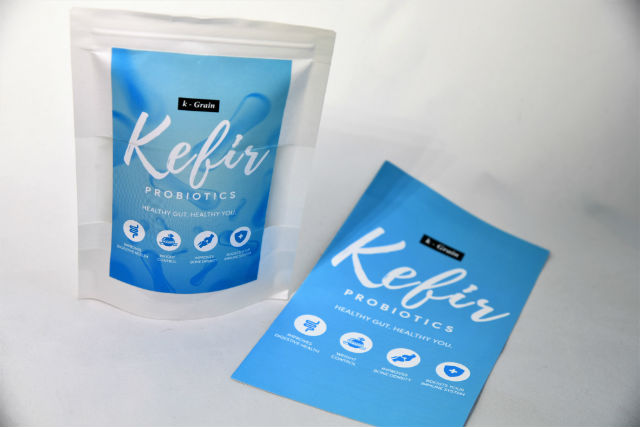
Introducing kefir, a cultured, fermented milk drink with a thinner consistency as compared to yoghurt.
Kefir is made from kefir powder, a type of culture which consists of fresh healthy bacteria and cultured yeast that is good for your gut.
Rich in probiotics and other health benefits
The presence of probiotics assists with digestion and absorption of nutrients, regulates normal bowel movement, improves gut flora environment and reduces stomach bloating.
Besides being high in probiotic health benefits, kefir, which is usually prepared using cow, goat or sheep milk and is loaded with protein, minerals and vitamins.
As well, kefir also contains minerals like potassium, magnesium and calcium, which is important for building bone density.

k-Grain Kefir Probiotics
I have to admit that I had never heard of kefir till recently. The kefir which I had tried was from k-Grain Kefir Probiotics, which contains 3 trillion probiotics contained within each 2-gram sachet.
Additionally, this brand also contains active kefir cultures and is scientifically formulated in Japan with up to 61 strains of beneficial microbes to encourage optimal health and well-being.
These strains of bacterial and yeast make it a very rich and diverse probiotic source.
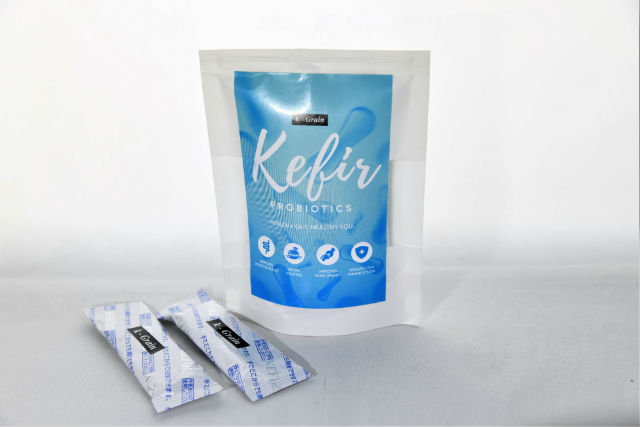
As well, k-Grain Kefir Probiotics is 100% customisable and easy to make. According to the manufacturers, it is also sugar-free and suitable for both vegetarians and lactose-intolerant consumers with the use of non-dairy milk like soy and almond.
Preparing my k-Grain Kefir
Over the weekend, I tried preparing two versions of the k-Grain Kefir Probiotics, one with fresh full-cream cow’s milk and the other one with almond milk.
Following the instructions on the packet, I poured the contents of one sachet into 500ml of each type of milk.
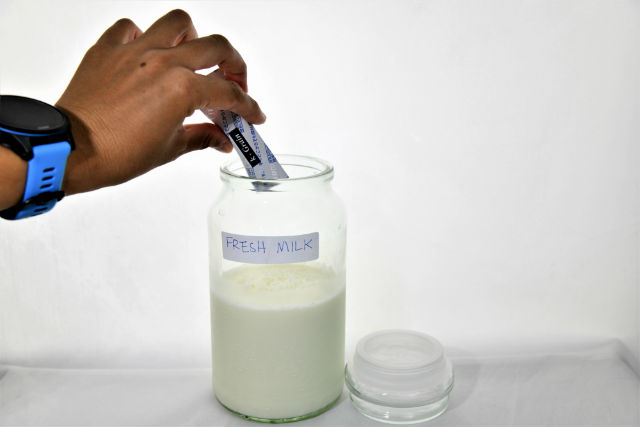
After shaking each bottle to properly mix the kefir into the milk, I let both bottles ferment at room temperature i.e. on the fruit shelf in our dining room, for slightly over 24 hours.
Printed on the package, the instructions were clear, concise and easy to read and follow. This was good.
Though I had used transparent containers, I wasn’t really able to see the fermentation process taking place.
Once the fermentation process begins, the containers are not supposed to be shaken or stirred, as this may cause the fermentation to fail according to the manufacturers.
The following afternoon, my kefir was ready. Eagerly, I took both containers down to check on the results.
Fresh full-cream cow’s milk kefir
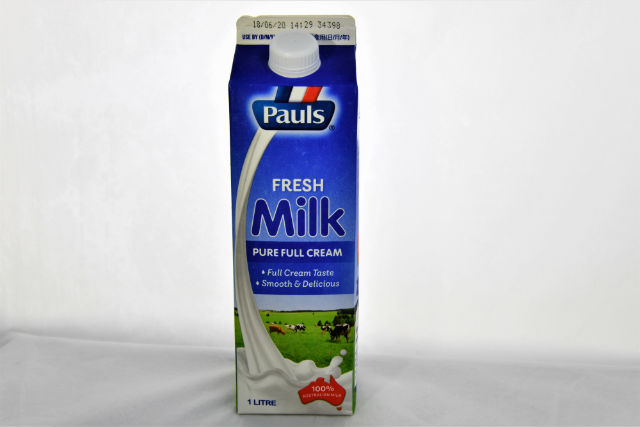
For the kefir using fresh cow’s milk, I opened the lid and the first thing that greeted me was similar to the delicious smell of natural yoghurt. As well, the texture had also thickened substantially into a semi-solid state. So far, so good.
After chilling, I tasted some and it was surprisingly quite delicious. It can be spooned out just like yoghurt and each glob sticks onto the spoon quite well. Chewing is not required and each scoop is quite easy and pleasant to swallow. Taste-wise, I thought it has a substantially more tangy flavour than yoghurt.
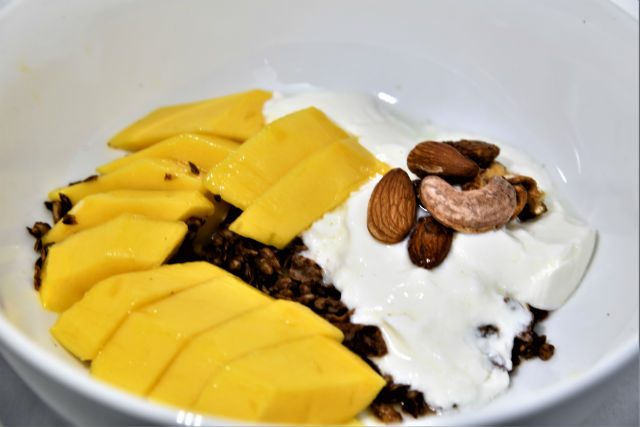
I had thought that this kefir tasted especially good when it was paired with some store-bought granola to give it a bit of sweetness, with the combination of textures and flavours complementing each other very well.
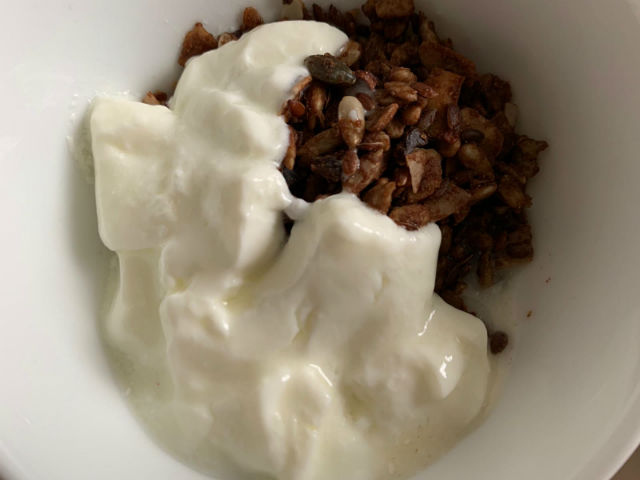
Also, I think that eating cow’s milk kefir with some fruits will also be good, because the natural sweetness from the fruits will contrast well against the tangy flavours from the kefir. I used to eat large amounts of fruits with yoghurt at one stage, so eating this kefir will remind me of those days.
Almond milk kefir
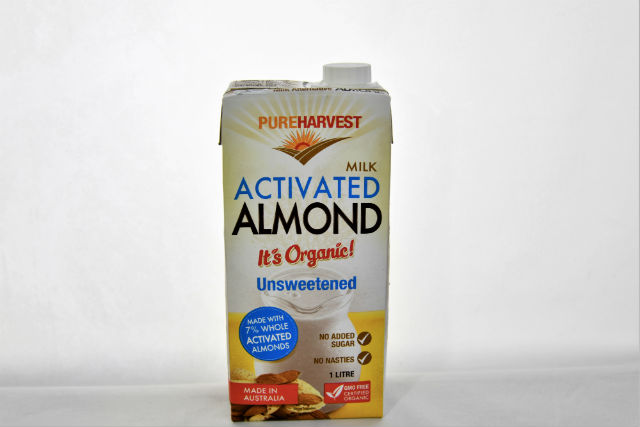
However for the almond milk kefir, this had still retained a liquid state, and smelled heavily of almond milk albeit with a slightly sour tang when I had pulled the bottle lid open.
This kefir version also didn’t taste as good as the cow’s milk version and it was in the form of a liquid drink rather than a semi-solid state.
This is because the natural flavour of the almond milk was still apparent but at the same time, it had taken on a sourish note that lingers on in the mouth upon finishing this version of the kefir. I wondered whether I should have left it to ferment for an additional day and see if that would have made much of a difference in the constituency.
I admit I had been quite surprised by how different the two versions of kefir had turned out. Ultimately, I guess that lactose is still needed for the fermentation process to work well.
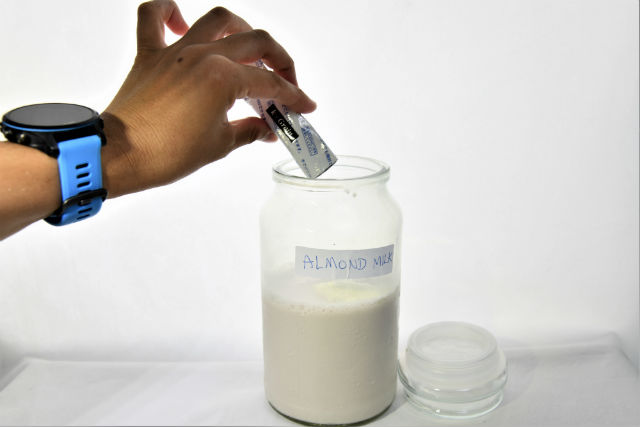
While the almond milk kefir is still drinkable, I have to say that it wasn’t the most pleasant of beverages to consume. So I will probably be sticking to the full-cream cow’s milk in the future when I make my kefir again.
Try out k-Grain Kefir for yourself + 5% OFF

If you would like to try out the k-Grain Kefir Probiotics for yourself, use the promo code “MEDIA5” for your purchases to enjoy 5% off.
Visit https://www.qbi.sg/products/kefir-probiotics for more information on the k-Grain Kefir Probiotics and their products.

Leave a Comment